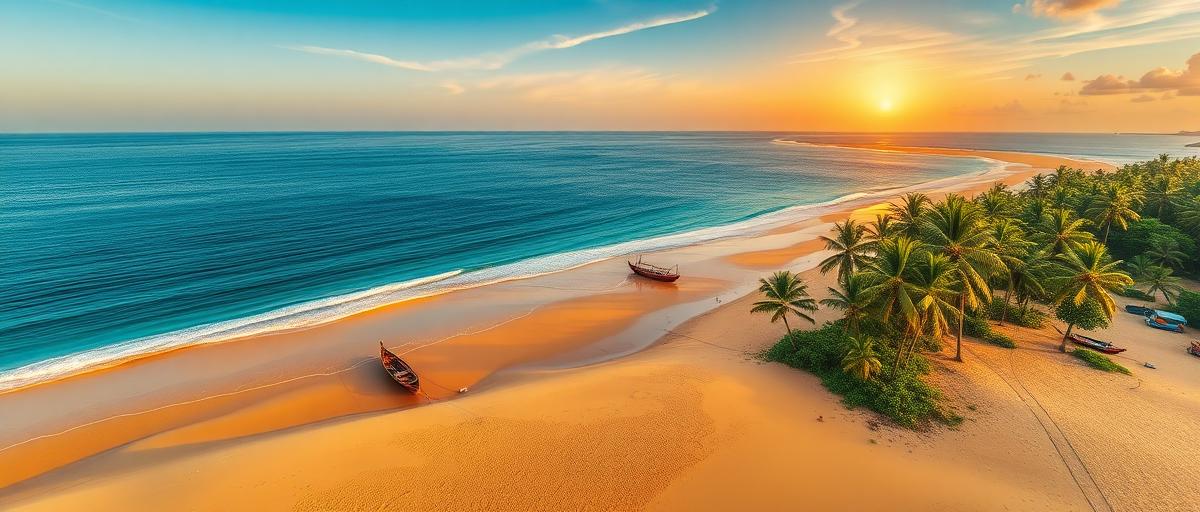Sri Lanka, the teardrop-shaped island in the Indian Ocean, is a paradise for beach lovers. With over 1,300 kilometers of coastline, the country boasts some of the most breathtaking beaches in the world. From the golden sands of the west to the untouched coves of the east, each beach tells a unique story shaped by nature, culture, and history.
The origins of Sri Lanka’s beaches trace back millions of years, formed by the gradual erosion of ancient rock formations and the relentless work of ocean currents. The island’s position along major maritime trade routes also means its shores have witnessed the footprints of explorers, traders, and colonizers, each leaving behind fragments of their legacy.
One of the most famous beaches, Unawatuna, is steeped in legend. Local folklore claims it was here that Hanuman, the monkey god from the Ramayana, dropped a piece of the Himalayan herb Sanjeevani, giving the beach its name, which means ‘here it fell.’ The crescent-shaped bay, fringed by palm trees, is now a haven for snorkelers and sunset chasers.

Mirissa, on the south coast, is a hotspot for whale watching. Between December and April, the waters come alive with blue whales, sperm whales, and playful dolphins. The beach itself is a postcard-perfect stretch of soft sand, lined with rustic beach shacks serving fresh seafood and tropical cocktails.
For those seeking solitude, the eastern beaches like Nilaveli and Pasikudah offer miles of untouched shoreline. Pasikudah, which translates to ‘green-algae bay,’ is known for its shallow, calm waters, making it ideal for swimming and water sports. The beach’s unique ecosystem supports a variety of marine life, including colorful coral reefs and sea turtles.
Wildlife enthusiasts will find the beaches of Yala and Bundala fascinating. These areas, adjacent to national parks, are nesting grounds for endangered species like the leatherback turtle. Between May and September, visitors can witness the awe-inspiring sight of turtle hatchlings making their first journey to the sea.
The cultural significance of Sri Lanka’s beaches is equally compelling. In the north, the beaches of Jaffna bear traces of the island’s colonial past, with remnants of Dutch forts and Tamil fishing traditions still thriving. Meanwhile, the west coast beaches like Bentota and Negombo are dotted with colonial-era lighthouses and bustling fish markets.
What sets Sri Lanka’s beaches apart is their diversity. The west coast, influenced by the monsoon from May to September, offers vibrant nightlife and water sports, while the east coast, best visited from April to September, provides serene escapes. The southern beaches, with their year-round appeal, strike a perfect balance between adventure and relaxation.
From a geological perspective, the island’s beaches are a treasure trove. The sand composition varies from fine golden grains in the south to coarser, mineral-rich sands in the east. Some beaches, like Hiriketiya, are framed by dramatic rock formations, creating natural pools perfect for a refreshing dip.
As someone who has explored these shores extensively, I’ve always been struck by how each beach has its own personality. Unawatuna feels like a lively friend, always ready for a party, while Tangalle is the quiet thinker, offering solitude and introspection. The beaches of Sri Lanka aren’t just destinations; they’re living, breathing entities that change with the tides and seasons.
In a world where untouched paradises are dwindling, Sri Lanka’s beaches remain a testament to nature’s artistry. Whether you’re a thrill-seeker, a culture buff, or simply someone who loves the sound of waves, there’s a stretch of sand here with your name on it. The island’s coastline is a reminder that some of the best stories are written not in books, but in the sands of time.

